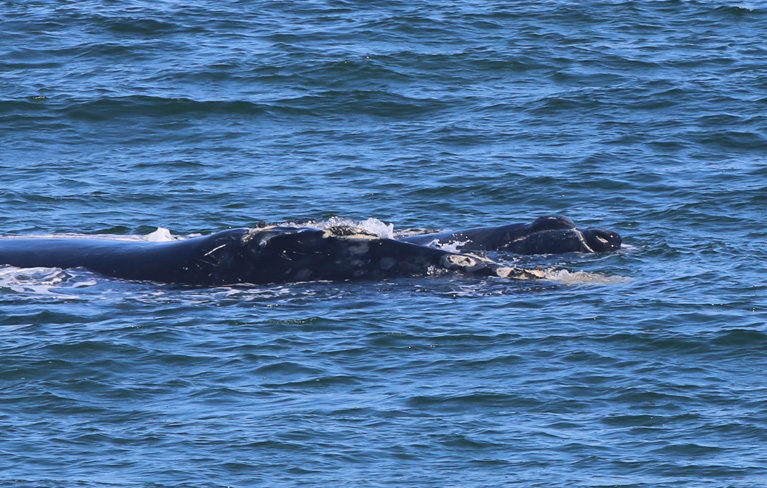
As North Atlantic right whale season nears its end this month in Florida and Georgia, prospects for the survival of one of the world’s most endangered whales look a little bit better than last season– but not much.
A total of 23 of the huge marine mammals – including seven calves – have been documented off the Treasure and Space coasts and in waters to the north since early February, according to Julie Albert, who runs the right whale conservation program for Palm Bay-based Marine Resources Council.
The number of calves is an improvement over 2018 when none were born but doesn’t make up for 20 right whale deaths documented in 2017 and 2018 among a population that numbers only about 400.
“Last year was the worst year [for calving] on record,” Albert said. “Seven is better than zero, but it’s still not good. Ever since 2011, the population has been on a steady decline. It would have been nice to see 17 calves this year just to maintain.”
The best season on record was 2008-09 when 39 calves were born in this region, she said.
The whales, which grow up to 55 feet in length and can weigh 70 tons, can live as long as 100 years, but females take 10 years to reach sexual maturity and only breed once every three to five years. Gestation is about one year, and the single calf is nursed for nine to 12 months, according to the World Wildlife Foundation
Whales are killed ship strikes, entanglement in fishing nets and gear and other causes.
For the past two decades, Albert has trained and coordinated more than 100 volunteer whale spotters – on the beach, the sea, and in the air – as the animals migrate south from New England and Canada to give birth off Florida and Georgia in winter.
Individual whales are identified by unique patches of rough, raised white skin on their heads called callosities and documented in a national data base to help estimate population size
Albert said four mother/calf pairs were observed off Brevard County, and one pair was seen travelling south to Vero Beach and Jensen Beach. They may head back to the northeastern U.S. through our waters, she said.
“If they’re out there and still around, they might come close to shore,” she said.
The Florida right whale season “officially” ends on March 31, but whales don’t necessarily respect the calendar. A pair was spotted off Jacksonville in mid-July 2007.
Despite federal laws that slow big ships down, shift their travel lanes away from the whales’ migratory routes, impose time and area closures for fishermen and require boaters to stay at least five football field-lengths away, many whales continue to be killed by ships before they have a chance to reproduce.
And that has put North Atlantic right whales, one of the largest animals on earth, on the brink of extinction – which some scientists say could come within 20 years.
One of 2019’s top priorities for the National Oceanic and Atmospheric Administration, the agency in charge of whale conservation, is to “stabilize” this highest-priority protected species.
The agency says it plans to investigate and develop measures to mitigate threats to the recovery of the whales, including research and development of whale-safe fishing gear.
That effort may get a boost in Congress; a bipartisan bill recently introduced in the House would provide up to $5 million dollars in grants each year for the next 10 years to fund such technology.



